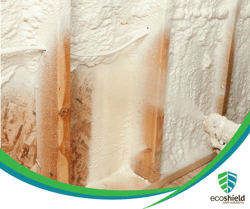 In the search for energy-efficient homes, many homeowners have turned to spray foam insulation as a promising solution. While this innovative insulation method offers undeniable benefits, such as enhanced energy efficiency and improved indoor comfort, it's essential for homeowners to weigh the pros and cons before making a decision. EcoShield is here to shed light on the often-overlooked disadvantages of spray foam insulation. From potential health concerns to installation challenges, understanding these drawbacks can empower homeowners to make informed choices about their home insulation, ensuring a well-rounded perspective on this popular but far-from-flawless option.
In the search for energy-efficient homes, many homeowners have turned to spray foam insulation as a promising solution. While this innovative insulation method offers undeniable benefits, such as enhanced energy efficiency and improved indoor comfort, it's essential for homeowners to weigh the pros and cons before making a decision. EcoShield is here to shed light on the often-overlooked disadvantages of spray foam insulation. From potential health concerns to installation challenges, understanding these drawbacks can empower homeowners to make informed choices about their home insulation, ensuring a well-rounded perspective on this popular but far-from-flawless option.
What is insulation?
Insulation, a fundamental component of any home, serves as a crucial barrier against the constant exchange of heat between the interior and exterior environments. Its primary purpose is regulating temperature, creating a more energy-efficient and comfortable living space. The need for insulation arises from the natural tendency of heat to flow from warmer to cooler areas, a process that occurs through conduction, convection, and radiation. Without effective insulation, homes would be susceptible to temperature extremes, making it challenging to maintain a consistent and comfortable indoor climate while also significantly impacting energy bills.
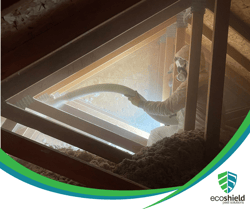 Various types of insulation serve a variety of needs and preferences, each with its unique set of characteristics. Common insulation varieties include fiberglass insulation, composed of fine glass fibers, and cellulose insulation, made from recycled paper products treated with flame-retardant chemicals. Additionally, spray foam insulation expands upon application, filling gaps and creating a thermal barrier. Reflective insulation relies on reflective surfaces to redirect radiant heat, while rigid foam boards provide a durable and moisture-resistant solution. The choice of insulation depends on factors such as climate, budget, and the specific requirements of the structure in question.
Various types of insulation serve a variety of needs and preferences, each with its unique set of characteristics. Common insulation varieties include fiberglass insulation, composed of fine glass fibers, and cellulose insulation, made from recycled paper products treated with flame-retardant chemicals. Additionally, spray foam insulation expands upon application, filling gaps and creating a thermal barrier. Reflective insulation relies on reflective surfaces to redirect radiant heat, while rigid foam boards provide a durable and moisture-resistant solution. The choice of insulation depends on factors such as climate, budget, and the specific requirements of the structure in question.
The functioning of insulation is rooted in its ability to impede the transfer of heat. In essence, insulation materials create a barrier that inhibits the movement of thermal energy, both from the interior to the exterior and vice versa. Fibrous materials trap air within their structure, effectively slowing down the movement of heat through conduction. Similarly, reflective surfaces bounce radiant heat away, preventing its absorption. The thickness and density of the insulation, as well as its proper installation, play pivotal roles in maximizing its effectiveness. By minimizing heat transfer, insulation not only ensures a more temperate indoor environment but also reduces the strain on heating and cooling systems, promoting energy efficiency and sustainability. In this intricate dance between architectural design and material science, insulation emerges as a silent yet indispensable ally in the pursuit of thermal equilibrium within our living spaces.
Why is my Home’s Insulation so Important?
Insulation, the unsung hero of home comfort, weaves a multifaceted tale of impact that extends far beyond mere temperature control. Picture stepping into a well-insulated home – it's not just about escaping the biting cold or stifling heat; it's a sanctuary where the air holds a consistent embrace, offering comfort that transcends the seasons. This transformation isn't just a matter of luxury; it's a fundamental shift in the way homes function, providing occupants with a haven from the extremes of weather.
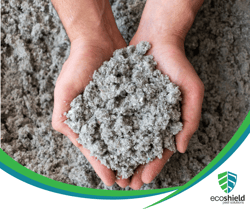 As the guardian against temperature whims, insulation becomes a silent partner in the pursuit of energy efficiency. The dance of warmth and coolness within the insulated walls translates into tangible savings on energy bills. The reduced strain on heating and cooling appliances not only lightens the load on your pocket but also contributes to a more sustainable, eco-friendly living. It's a subtle yet powerful ripple effect that resonates through every utility bill, leaving homeowners with more resources to channel into the things that truly matter.
As the guardian against temperature whims, insulation becomes a silent partner in the pursuit of energy efficiency. The dance of warmth and coolness within the insulated walls translates into tangible savings on energy bills. The reduced strain on heating and cooling appliances not only lightens the load on your pocket but also contributes to a more sustainable, eco-friendly living. It's a subtle yet powerful ripple effect that resonates through every utility bill, leaving homeowners with more resources to channel into the things that truly matter.
Beyond the practicalities, insulation adds a layer of serenity to your home's ambiance. It acts as a natural sound barrier, muffling the chaos of the outside world. The honking traffic, the neighbor's lawnmower, or the pitter-patter of rain – insulation turns down the volume, creating a tranquil oasis within your walls. This peace isn't just about solitude; it enhances the overall quality of life, turning your home into a retreat where relaxation and focus thrive.
Consider, too, the long-term investment insulation makes in your property. The upfront cost becomes a strategic move, amplifying your home's resale value. Prospective buyers are drawn to the promise of energy efficiency, comfort, and reduced utility expenses. Insulation, therefore, becomes a silent influencer in the real estate market, subtly nudging your property ahead in the eyes of potential buyers.
In essence, insulation is more than a layer between you and the weather; it's a silent force shaping the very essence of your home. It's about comfort that transcends seasons, savings that accumulate over time, a shield against noise, and an investment that pays dividends when it's time to move on. It's the subtle art of making a house not just a structure but a haven, where every corner whispers the tale of thoughtful living and enduring comfort.
Is Spray Foam Insulation the Best Option for Me?
It may be! However, you should know that spray foam insulation is NOT right for every home and homeowner. Let’s discuss why that is.
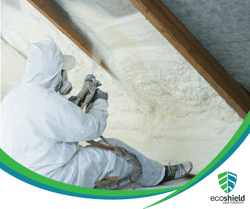 While spray foam insulation has gained popularity for its remarkable insulating properties, it's crucial for homeowners to be aware of its potential drawbacks. One significant concern is the upfront cost. Spray foam insulation tends to be more expensive than traditional insulation materials like fiberglass or cellulose. The initial investment can be a deterrent for some homeowners, especially those on a tight budget or limited funds.
While spray foam insulation has gained popularity for its remarkable insulating properties, it's crucial for homeowners to be aware of its potential drawbacks. One significant concern is the upfront cost. Spray foam insulation tends to be more expensive than traditional insulation materials like fiberglass or cellulose. The initial investment can be a deterrent for some homeowners, especially those on a tight budget or limited funds.
Another drawback of spray foam insulation lies in its application process. While it provides an airtight seal when installed correctly, improper installation can lead to issues such as insufficient coverage or off-gassing of chemicals during the curing process. This underscores the importance of hiring experienced professionals for the installation, adding an extra layer of cost and complexity. Additionally, retrofitting existing homes with spray foam insulation can be challenging, as it requires careful consideration of the existing structure and may involve significant alterations.
Furthermore, there are potential health concerns associated with spray foam insulation. Some formulations contain volatile organic compounds (VOCs) during and after installation, which can contribute to indoor air quality issues. Homeowners with respiratory sensitivities or allergies may find these emissions problematic. It becomes imperative for homeowners to thoroughly research the specific type of spray foam insulation being considered and discuss any health concerns with the insulation professionals to make an informed decision that aligns with both budgetary and health considerations.
Why Does EcoShield Offer Cellulose Insulation Instead of Spray Foam Insulation?
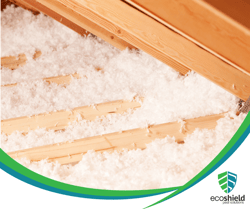 EcoShield offers cellulose insulation to our customers over spray foam insulation for various reasons, all of which is rooted in both practicality and customer-centric considerations. First and foremost, cost-effectiveness often plays a pivotal role. Cellulose insulation tends to be more budget-friendly than spray foam insulation, making it an attractive option for homeowners looking to improve their home's energy efficiency without breaking the bank. This cost advantage can be particularly appealing for customers on a budget or those seeking a more economical insulation solution.
EcoShield offers cellulose insulation to our customers over spray foam insulation for various reasons, all of which is rooted in both practicality and customer-centric considerations. First and foremost, cost-effectiveness often plays a pivotal role. Cellulose insulation tends to be more budget-friendly than spray foam insulation, making it an attractive option for homeowners looking to improve their home's energy efficiency without breaking the bank. This cost advantage can be particularly appealing for customers on a budget or those seeking a more economical insulation solution.
Environmental considerations also factor into the decision to offer cellulose insulation. Cellulose often comprises recycled paper products, contributing to its eco-friendly appeal. Insulation providers committed to sustainability and environmentally conscious practices may choose cellulose as a more sustainable alternative to spray foam, which can have a higher environmental impact due to the chemicals used in its production.
Moreover, cellulose insulation is known for its fire-retardant properties, providing homeowners with an added layer of safety. This fire-resistant quality can be a significant selling point for insulation providers, especially in regions where fire safety is a paramount concern.
Additionally, cellulose insulation is considered a versatile option that can be applied in various forms, including loose-fill and dense-packed applications. This flexibility allows insulation providers to cater to a diverse range of home structures and insulation needs. It can be a more adaptable solution when compared to the specific application requirements and potential retrofit challenges associated with spray foam insulation.
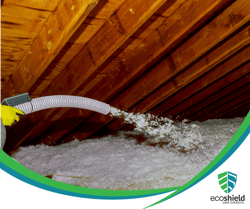 Lastly, EcoShield’s blown-in cellulose insulation has been treated to be pest-resistant, offering the additional benefit of pest prevention for homeowners. The pest treatment not only helps protect the cellulose insulation from infestations but can also contribute to the overall longevity and performance of the insulation material. Many pest-conscious homeowners view EcoShield’s cellulose insulation as a proactive measure to minimize the risk of pest-related issues within the insulation while still benefiting from the energy efficiency and sustainability aspects of cellulose insulation. It's an option that strikes a balance between environmentally conscious insulation choices and the practical need for pest resistance in living environments.
Lastly, EcoShield’s blown-in cellulose insulation has been treated to be pest-resistant, offering the additional benefit of pest prevention for homeowners. The pest treatment not only helps protect the cellulose insulation from infestations but can also contribute to the overall longevity and performance of the insulation material. Many pest-conscious homeowners view EcoShield’s cellulose insulation as a proactive measure to minimize the risk of pest-related issues within the insulation while still benefiting from the energy efficiency and sustainability aspects of cellulose insulation. It's an option that strikes a balance between environmentally conscious insulation choices and the practical need for pest resistance in living environments.
How do I Know if Pest-Treated Cellulose Insulation is Right for my Home?
Not certain if pest-treated cellulose insulation is the right fit for your home? Look no further than EcoShield Pest Solutions. We offer complimentary, no-obligation inspections and quotes, ensuring your decision-making process is as hassle-free as possible. Our team of seasoned insulation technicians is equipped with the expertise to address any questions or concerns you might have, empowering homeowners to make informed choices tailored to their specific needs and preferences. Whether you give us a call or fill out the form on this page, taking the first step in your home insulation journey has never been easier. Contact us today to enjoy a more comfortable and pest-resistant home!